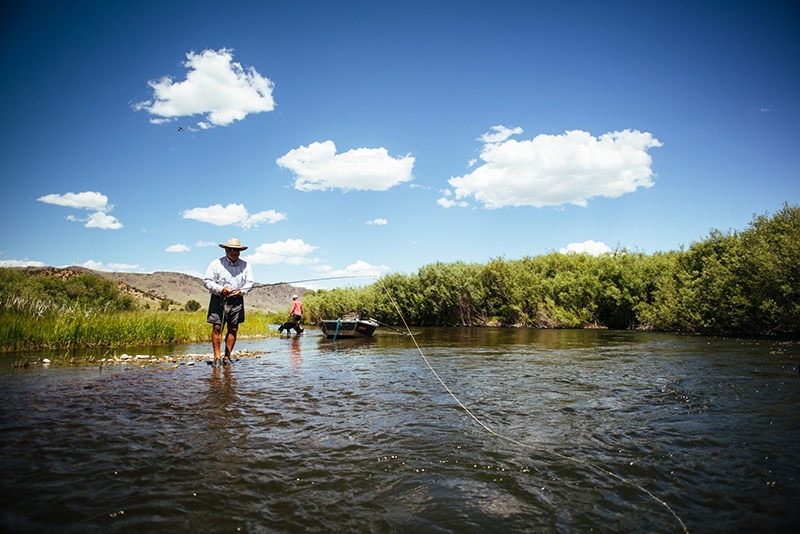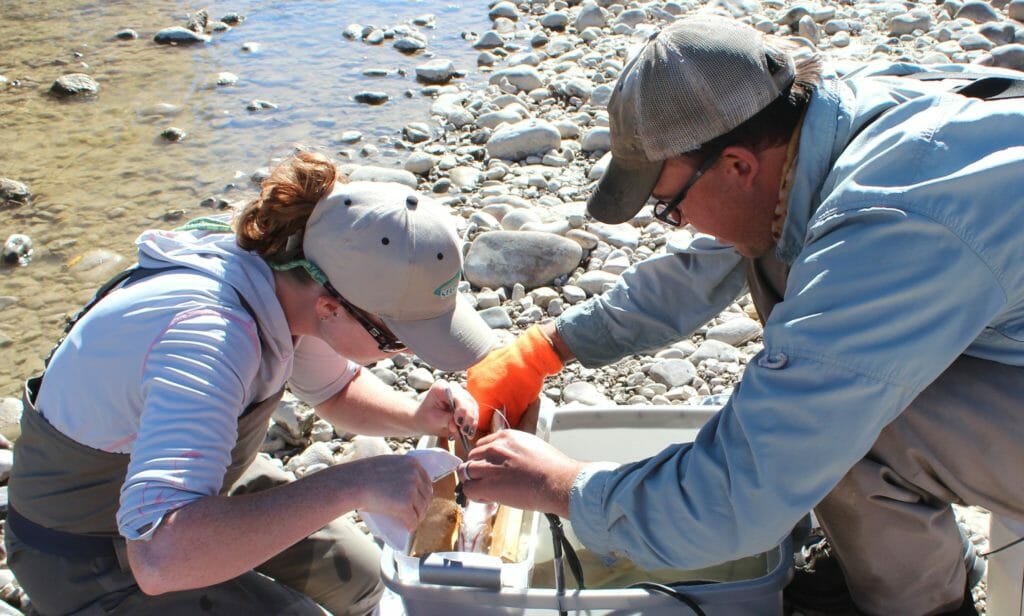
Tracking how and when fish move to different habitats, and the different biological strategies they use, lets us learn about their basic ecology and understand how to sustain and restore what they need to thrive. It also helps verify the success of our restoration work when we confirm that fish are accessing and using restored habitats.
We have implemented various collaborative studies documenting fish movement and life histories in Colorado River cutthroat trout, Bear River cutthroat trout, Klamath River redband trout, and Coastal cutthroat trout. Additionally, Wyoming Trout Unlimited’s Adopt-A-Trout program in partnership with Wyoming Game and Fish offers an educational real-world science program pairing classrooms with fisheries movement studies.
Collectively, these studies have increased our understanding of trout biology and ecology, identified priorities for on-the-ground habitat restoration, fish passage and entrainment projects, and helped verify the effectiveness of these projects after their implementation.
Replacing culvert barriers with structures that enable fish or other aquatic organism passage is a major conservation priority in the US, one that comes at great expense (ranging from 10s to 100s of millions of dollars across a given river basin). Yet despite this massive nation-wide effort, we still have little data to confirm that fish are able to pass through the new structures effectively, and even less information to guide managers about which methods are most informative and cost-effective for monitoring fish passage. This paper was commissioned by the US Forest Service as part of a national synthesis and guidelines for effectiveness monitoring of Aquatic Organism Passage projects. In this field study, across four streams in Montana and Idaho, we compared the relative performance and cost of four different mark-recapture approaches to verifying upstream fish passage of native cutthroat and non-native brook trout through recently remediated culverts. These monitoring methods were also compared to a genetic method evaluated in a previous study, and overall provide the first comparison of the performance and relative costs of these common field methods at the same set of culverts.”
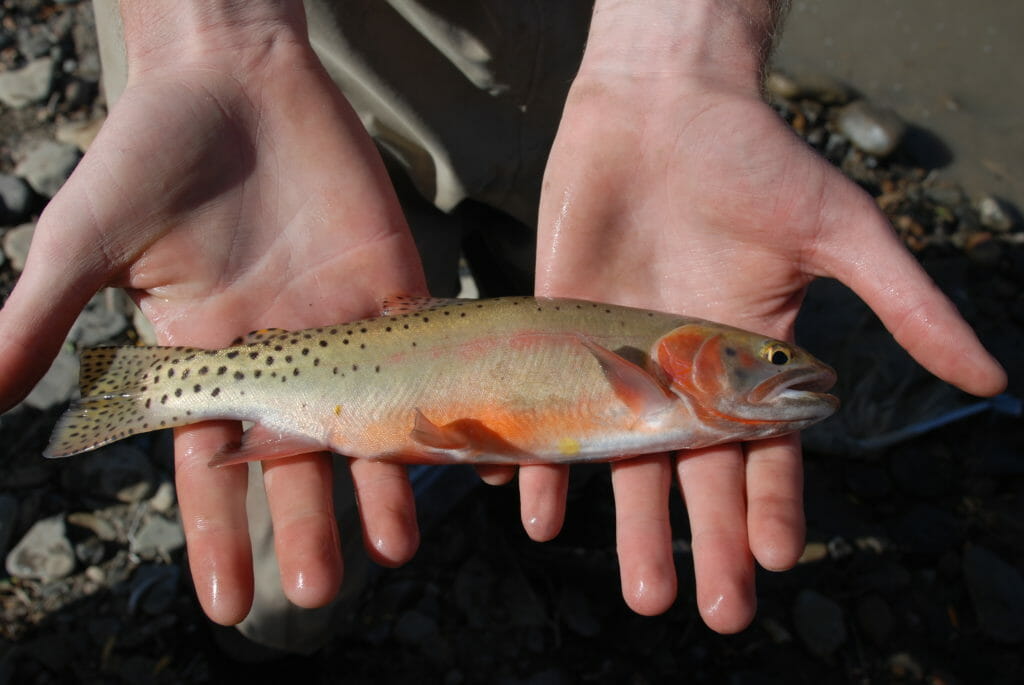
TU and partners have used radio telemetry and fish tags to monitor restoration success and identify key over-wintering, spawning, and coldwater refuge habitats in the headwaters of the Colorado River.
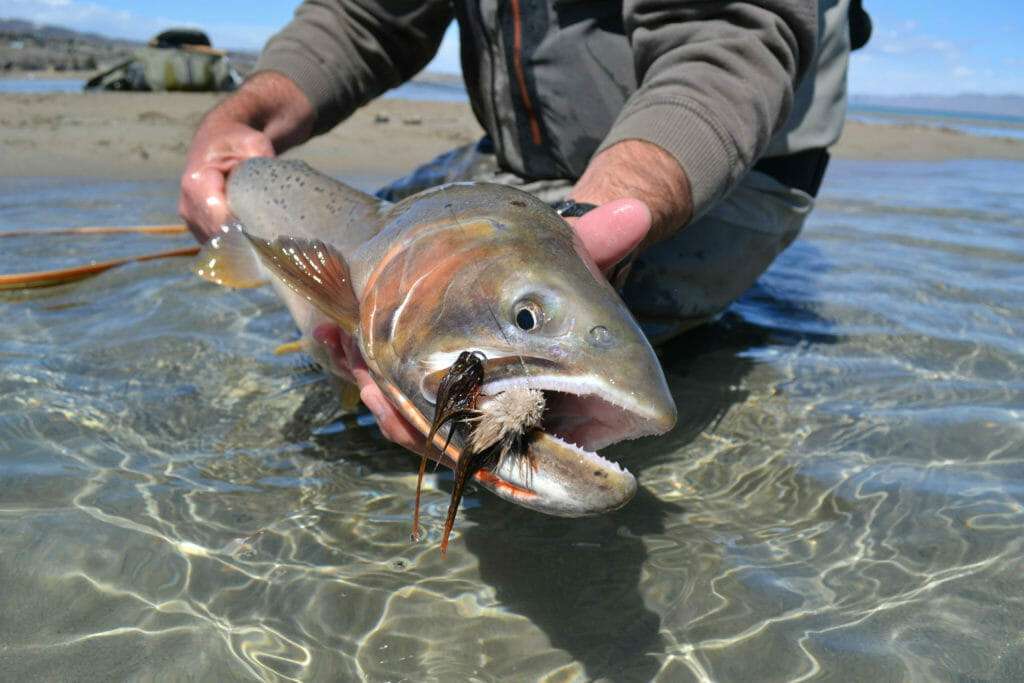
Tracking cutthroat trout movements in the Bear River basin has helped identify critical fish passage barriers and entrainment sites, leading to several restoration projects to improve fish passage and screen irrigation diversions.
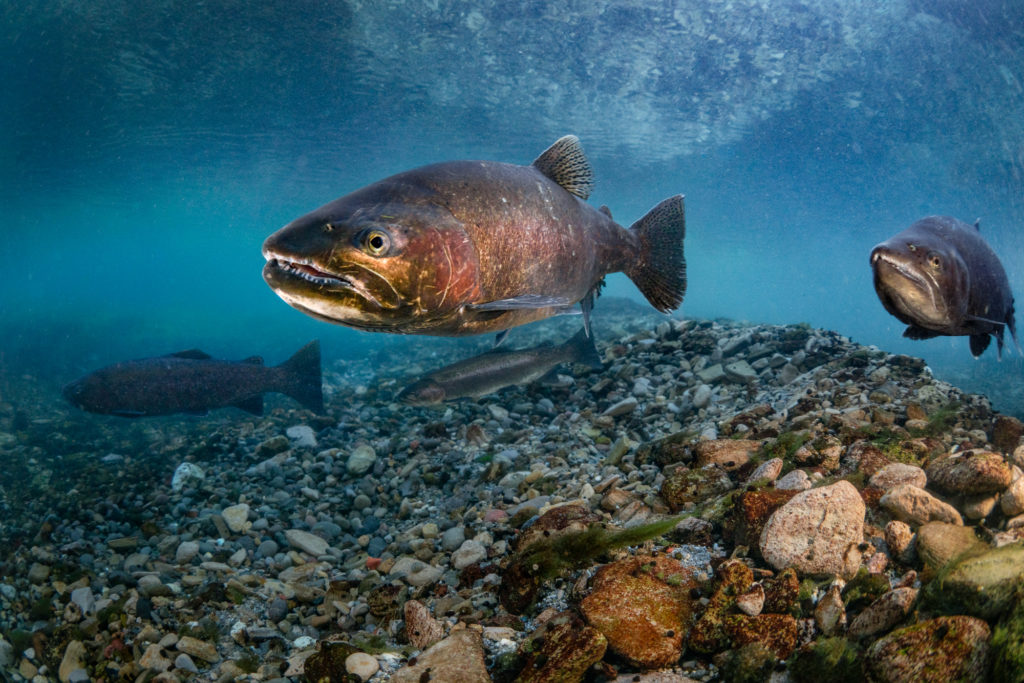
Radio telemetry studies of redband trout in Upper Klamath lake have revealed unique seasonal movement patterns between the lake, coldwater refuge habitats, and spawning areas.
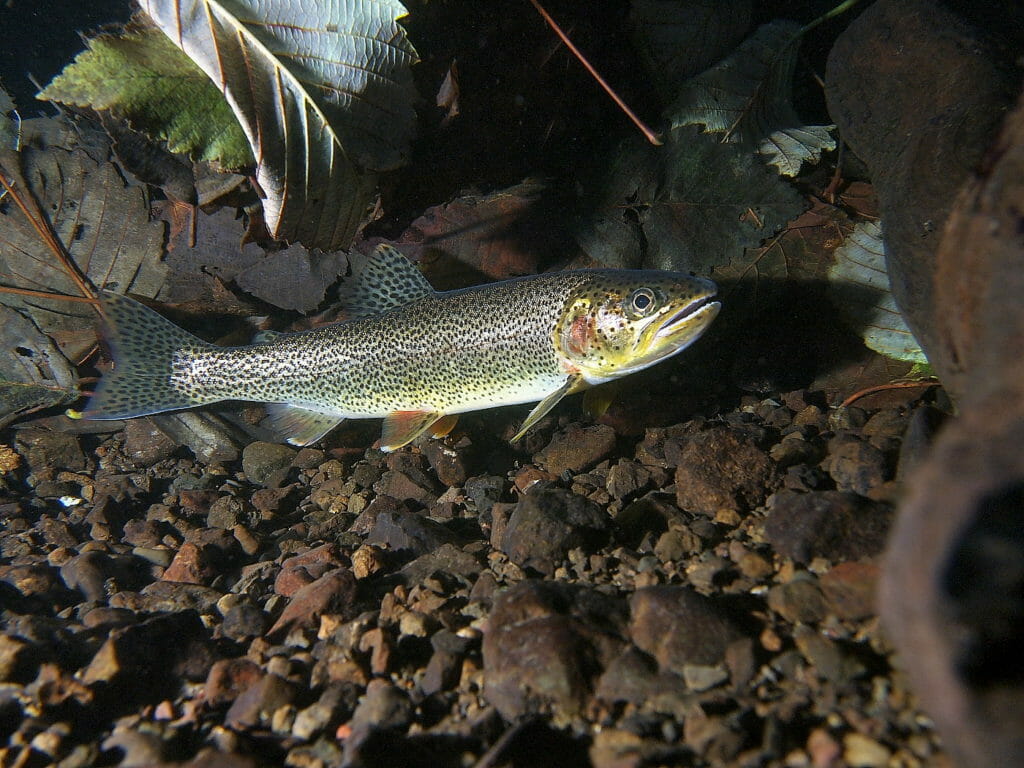
TU and partners identified unusual fall spawning in coastal cutthroat trout in the Elwha River system, Washington.


